Routes of Drug Administration: Route of administration refers to the starting point for the drug’s introduction into the body up to the place where it acts upon the target organ or system. The route of administration for the drug depends on several factors like the nature of the drug, its pharmacokinetics, and the nature and urgency of the medical condition. The main routes of administration are: local and systemic. The local route is further sub-classified into topical like the administration to the eye, ear, nose, etc. The systemic route is further divided into enteral and parenteral. The enteral route consists of oral, rectal, and sublingual. The parenteral route consists of inhalation, and various injections like sub-cutaneous, intra-muscular, and vascular types. Definitions of all routes of administration are presented below:

- Enteral: It means through the gastrointestinal tract. It includes oral, sublingual, and rectal routes.
- Parenteral: It means through routes other than enteral. It includes all types of injections, inhalations.
- Local: It includes administration of a drug at the site where the desired action is intended. It includes topical administration in the oral cavity, gastrointestinal tract, rectum/anal canal, eye, ear, nose, bronchi, skin, intra-arterial, injection in deep tissues e.g. joints.
- Systemic: It includes drugs administered to enter the blood to produce systemic effects.
- Oral: It means drugs taken by mouth e.g. tablets, capsules, syrups, mixtures etc.
- Intravenous: It includes drugs injected directly into the bloodstream through a vein. It may be administered as a bolus, slow intravenous injection or an intravenous infusion.
- Intrathecal: It includes drugs injected into the sun-arachnoid space e.g. spinal anaesthetics like lignocaine.
- Intra-articular: It includes drugs injected directly into the joint space e.g. hydrocortisone injection for rheumatoid arthritis.
- Subcutaneous: It includes drugs injected into the subcutaneous tissues of the thigh, abdomen and arm e.g. adrenalin, insulin etc.
- Intradermal: It includes drugs injected into the dermis layer of the skin e.g. tuberculin and allergy tests.
- Intramuscular: It includes drugs injected into large muscles such as the deltoid, gluteus maximus and Vastu Slateralis. A volume of 5-10 ml can be given at a time e.g. paracetamol, diclofenac.
- Intraosseous: It includes injecting a drug directly into the marrow of a bone.
- Transdermal (patch): It includes administration of a drug in the form of a patch or ointment that delivers the drug into the circulation for systemic effect.
- Rectal: It includes administration of drugs in the form of suppository or enema into the rectum.
- Sublingual: In this case, the preparation is kept under the tongue. The drug is absorbed through the buccal membrane and enters the systemic circulation bypassing the liver e.g. nitroglycerine for acute angina attack.
- Inhalation: It includes volatile gases and liquids which are given by inhalation for systemic effects e.g. general anaesthetics.
- Endotracheal: It includes a catheter inserted into the trachea for the primary purpose of establishing and maintaining an airway to ensure adequate exchange of oxygen and carbon dioxide.
The broad classification is presented in Fig.1.
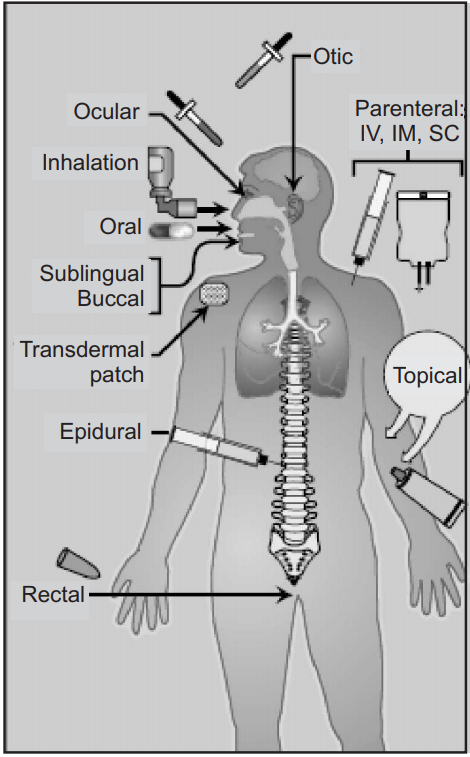
Fig.2 indicates a pictorial presentation of various injectable routes.
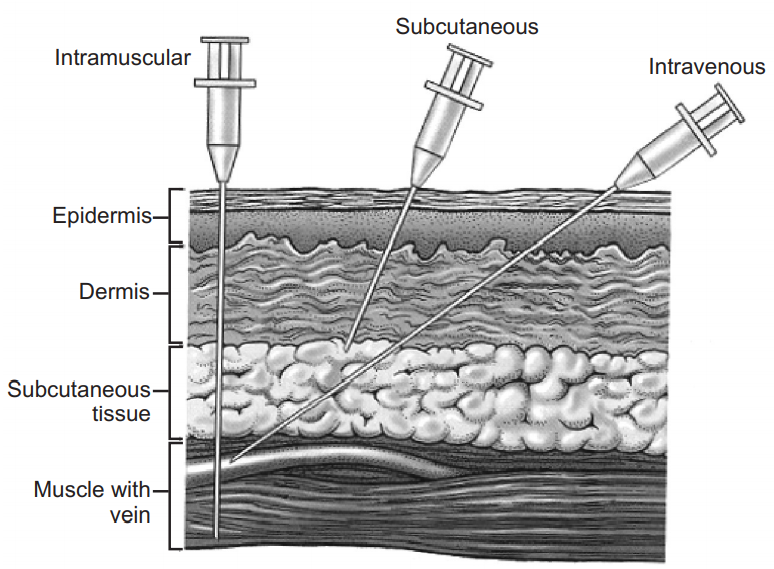
Brief characteristics of different routes of administration are presented in table.1.
Table.1: Absorption pattern, advantages, and disadvantages of most common routes of administration
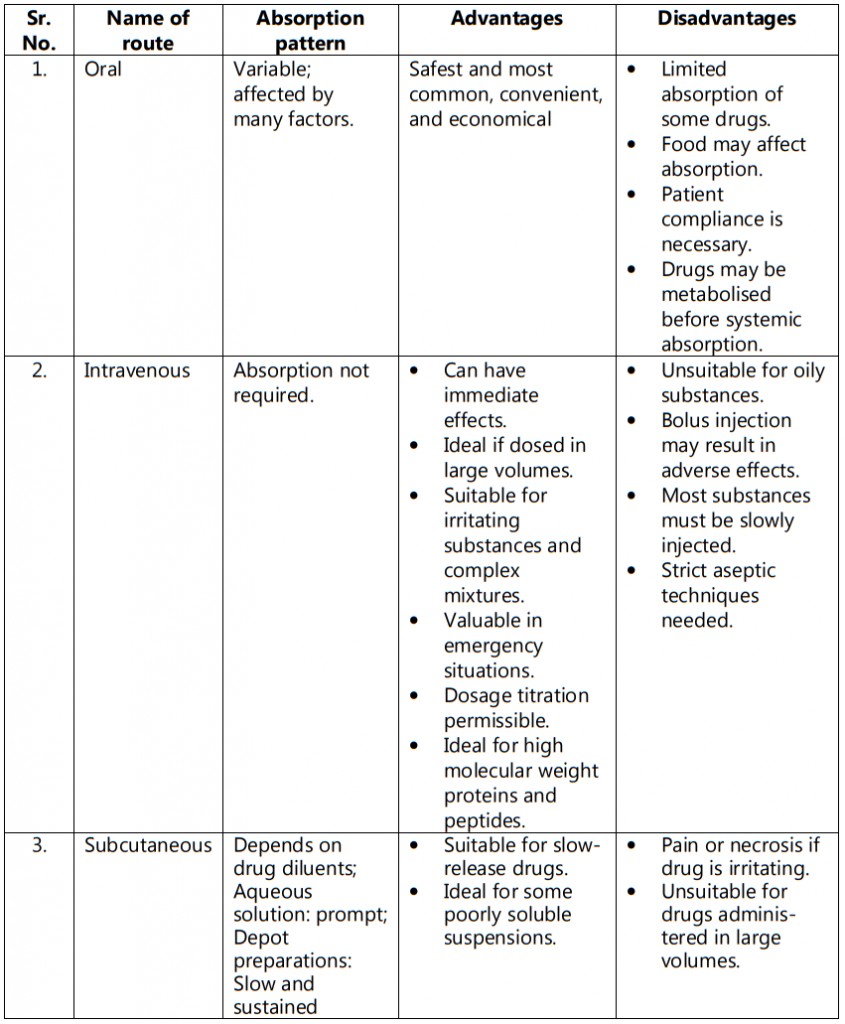
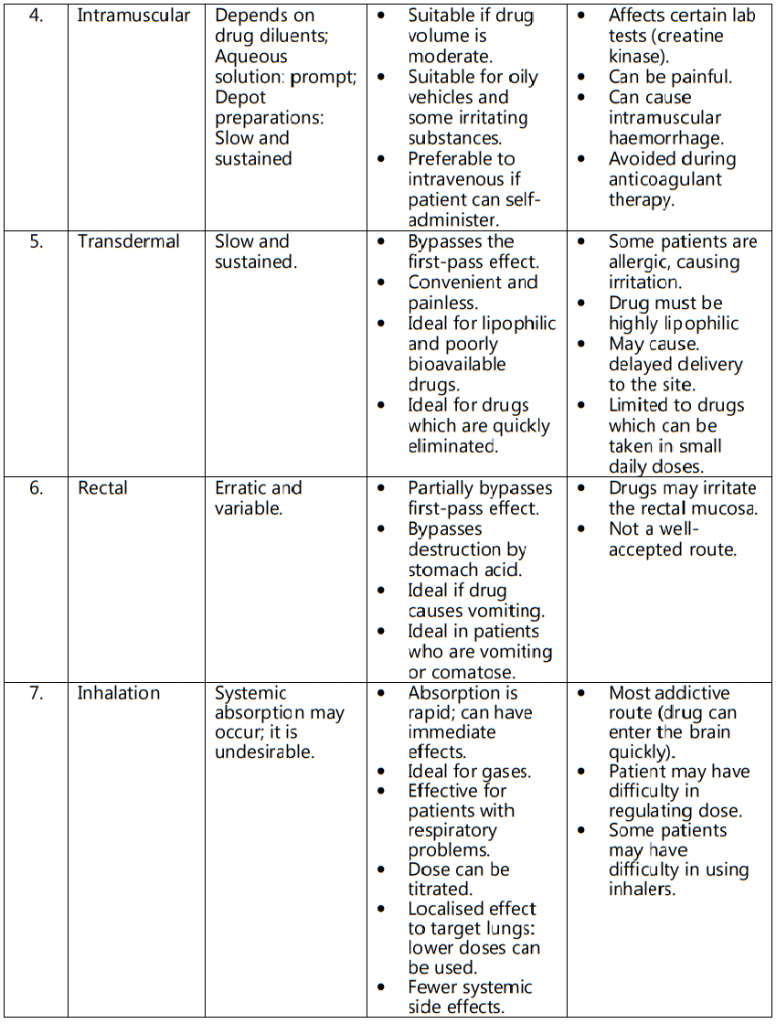
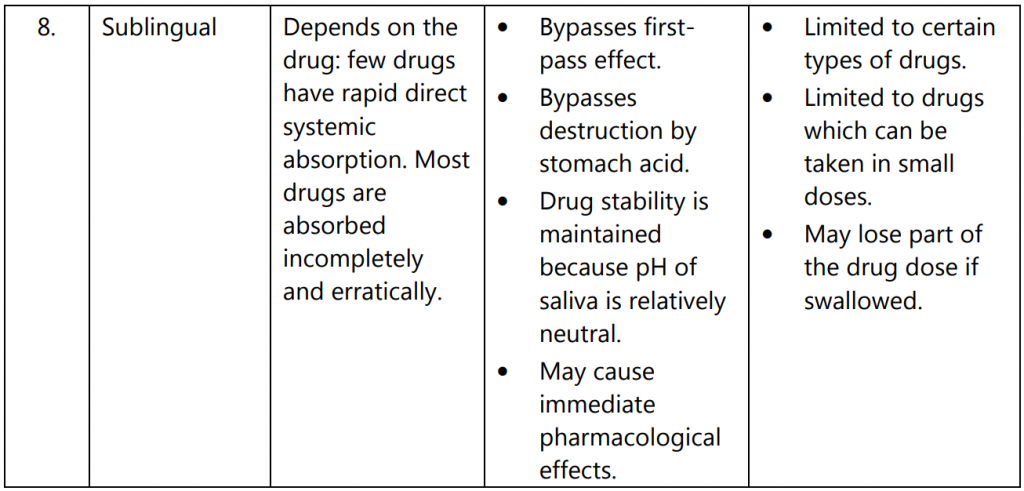
Duration in which the effect can initiate also depends on the route of administration. Table.2 provides information in this context.
Table.2: Effect of route of administration on initiation of the effect of drugs
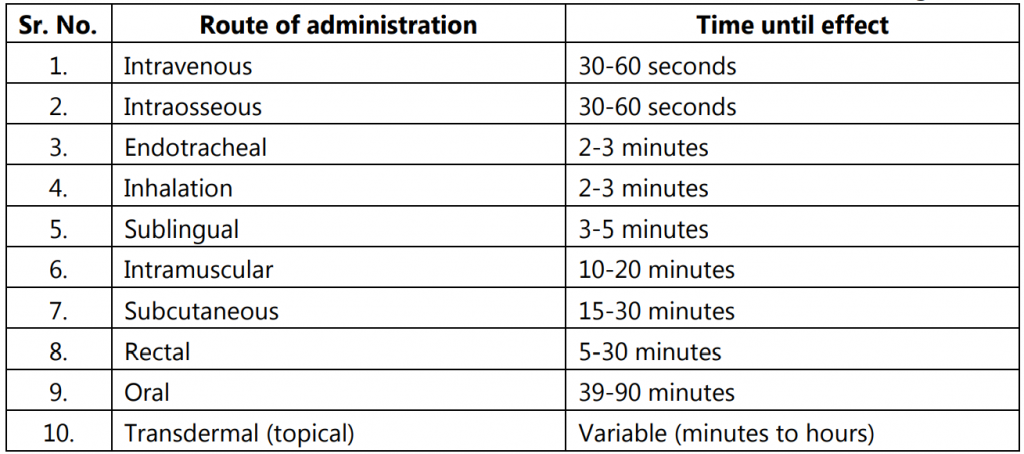
Drug and patient-related factors determine the selection of routes for drug administration. The factors are:
- Characteristics of drugs.
- Emergency/routine use.
- Site of action of the drug – local or systemic.
- Condition of the patient (unconscious, vomiting, diarrhoea).
- Age of the patient.
- Effect of gastric pH, digestive enzymes and first-pass metabolism.
- Patient’s/doctor’s choice.
Make sure you also check our other amazing Article on : Nature and Sources of Drugs
